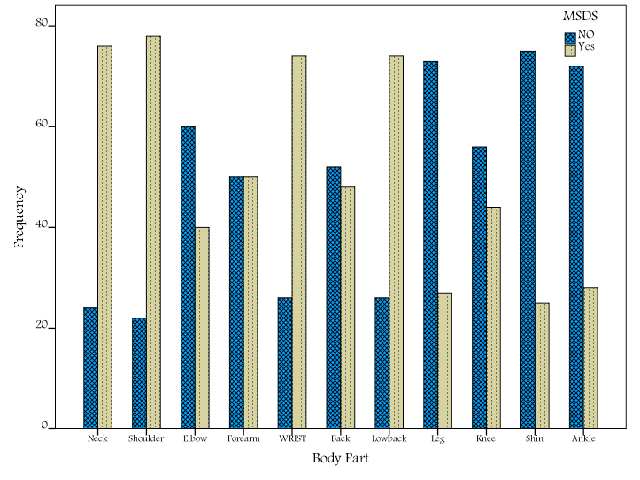Musculoskeletal Disorders among Plastering Workers
DOI:
https://doi.org/10.5530/BEMS.1.1.5Keywords:
Musculoskeletal Disorders, Nordic Questionnaire, Plastering Workers, Rapid Upper Limb AssessmentAbstract
Introduction: Work-related Musculoskeletal Disorders (WMSDs) represent one of the leading causes of occupational injury and disability. Construction workers are at high risk of developing the WMSDs. This study conducted to estimation the prevalence of WMSDs and evaluation the risk of awkward postures among plastering workers. Methods: Study cases consist of 100 plasterers that selected randomly. The Nordic Musculoskeletal Questionnaire (NMQ) completed to collection the data and determination the prevalence of WMSDs. The risk of WMSDs assessed via Rapid Upper Limb Assessment (RULA). SPSS was used to statistical analysis via Independent t-tests, one way ANOVA and multinomial logistic regression test. Results: NMQ showed the highest prevalence of Musculoskeletal Disorders (MSDs)in the shoulders, neck, back and wrist during the last 12 months. RULA assessment revealed that 24 Percent of workers have average grand score of Seven. By increasing one unit in RULA scores, chance of disorders has increased in most body part. By enhancing one year of work history, the chance of back disorders has increased. A significant relationship confirmed between average scores of RULA assessment and development of WMSDs. Conclusion: Relatively high frequency of poor postures and WMSDs among the plasterers denoting the high risk circumstances that required special attention. Awkward postures and repetition play an important role as one of the risk factors for these disorders. Ergonomic interventions must be focused on reducing the exposure to physical risk factors specially, awkward postures and repetition.










